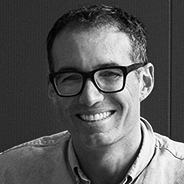Each season, arcCA DIGEST asks experts in the season’s theme – this time around, the materials from which buildings are made – to identify emerging issues, problems, opportunities, circumstances, etc., to which they believe architects should be alert.
Kevin Fleming, AIA, LEED AP, is an architect with DLR Group in Riverside, focused since 1990 on the programming, design, and construction of California public schools. He is former president of AIA Orange County.
DLR Group is partnering with Ocean View School District to install Bio Phase Change Material (Bio-PCM) in all of their campuses through their modernization program. This material acts as a thermal regulator, releasing and absorbing heat as it freezes and thaws at temperatures between 67 and 72 degrees. It is installed above the acoustic tile ceilings and is expected to save the district between 25% and 28% of their energy consumption.

As someone who works with biological materials, natural processes, and atmospheric phenomena, I am reminded every day of the agency of materials of the biophysical world – the sociality of trees, the complex multispecies world of living soils, the binding force of our planetary watercourse. As a medium that is always in the process of change, landscape and the liveliness of its composite material (“natural” or “constructed”) is a way of thinking. And yet, all the while, our anthropocentric perspective and attitude towards most landscape matter continues to be largely extractivist – focusing on its resource-value at the expense of all other relations. Our collective response to climate stress will require not just innovative materials, but social and economic transformation – a shift in our thinking about the biophysical world and our role and responsibility in it. The three opportunities I would offer to designers in this effort are: to actively engage with the agency of landscape matter; to design with those materials for the benefit of not only the human but all living species; and to incorporate deep time into questions of materiality – to think about its multiple afterlives within a circular economy model.

Material invention is rooted in the very origins of construction. For centuries, the playground for experimentation was the site. However, the rise of synthetic matter brought with it the forging of the industry lab and our progressive loss with experimentation onsite in the XX century. The advent of new digital fabrication technologies, visualization, and calculation capabilities of the last twenty years has provided us unprecedented opportunities to reclaim the territory of material invention. Architects, particularly in academia, are engaging in wide range of proof-of concepts of new material technologies, mostly in the form of installations that function as proofs-of-concept. As relevant as these contributions are alone, they are not proof-of-viability. Of particular interest to me currently is how we translate material inventions into the real world of construction practice.
To render materials innovation translatable to practice requires an evaluation of the mechanical properties of the material—strength, stiffness, hardness, etc.—and its performance when exposed to actual site conditions, especially weather. Some of my recent work has focused on 3D-printable natural materials, such as ground palm waste in a bioplastic binder designed from the nanoscale upwards with multifunctional capabilities, for possible use as enclosures in the Amazon basin. Such composites have great potential for local resourcing natural waste—it is staggering how much palm dust is created in agro-industrial processes—and for the decentralization of production and delivery. It also opens unprecedented opportunities for material culture reclamation. But how do these new material technologies perform when exposed to, for example, flooding as in the Amazon? Only rigorous assessment of properties and performance can convince the industry—architects, engineers, builders, and regulators—that a material is safe, effective, and durable over time. Advancing our capacity to produce and test natural materials innovation from the nano to the full scale can make translation into practice attainable.
Dr. Negar Kalantar is an associate professor at California College of the Arts, where she is Co-director of the Digital Craft Lab. Her research and practice focus on applications of advanced technologies as catalysts for innovation in the design of interactive and responsive environments. She is the head of Technology and Manufacturing at CREO, a bio-green tech startup based in the Bay Area. CREO is developing the next generation of micro-hydroponics, scalable indoor ecosystems that can become as integral to buildings as mechanical and electrical systems are today.
We are living in an era in which architects are no longer the mere users of building industry material choices, but can be inventors of our own. When imagining building materials, we typically think of non-living substances—concrete, brick, wood, steel—which at best are not detrimental to human health. In light of emerging climate and health crises, architecture requires biotechnology innovations to introduce new materials that elevate the experience of spaces and the quality of life. While living architecture has been a topic of interest amongst the architecture community, green living systems have never been realized as a reliable and integrated building material. Such systems, optimized with sensing technologies and growth algorithms, offer not only aesthetic pleasure but also many other benefits, from air purification to food production.

Technological feasibility of building taller towers or maximizing glazed areas should not lead to unquestioned pursuit of “more.” Improved glass performance allows it to compete with opaque exterior envelope material. But more glass is not better. Before dedicating resources to achieve alchemical transformation of glass, it should first be determined whether more transparency is appropriate. Innovations in structural and elevator systems allow buildings to be taller. But taller is not better. Tall towers disrupt the urban fabric and guzzle embodied energy. Should we really continue to build more?
In the previous era, technological advances in steel and glass gave rise to new expressions and new building typologies. In our current era, we need to ask whether we should continue to wait for innovations in materials to create a new expression. It may be that we should be looking elsewhere. If we part ways with the ethos that technological problem-solving can conquer all, we may discover a radically new expression in the humility that comes with the understanding that we occupy a vulnerable habitat and that we do not need to mark our territories with buildings.

The use of natural materials in design and engineering will contribute to decarbonization of the built environment. In response to the growing demand for low embodied carbon materials, wood is experiencing a renaissance, with buildings growing in height and technology expanding the way in which we build to be more efficient. Looking toward the future challenge of increased demand for urban housing, engineered bamboo is also being developed as a low-carbon structural material globally. Materials are the core of the built environment, and natural materials are emerging as competitive alternatives to conventional solutions.

To address the global health crisis, many manufacturers have embraced the challenge of quickly producing a plethora of creative material solutions and product designs. However, it is crucial at this time that architects and designers also push for more transparency on the production and environmental impact of these products. Perhaps what is also most interesting right now is the conflation of industries that have generally not been associated with one another, such as healthcare and the workplace.
It is critical to address three key factors when looking at surfaces for interior specifications: sustainability, cleanability and security. The industry has long fostered the mindset of relatively short-term solutions based on lease agreements – a mindset that has created a deluge of materials that end up in landfill. Thinking holistically is essential: not just what the material’s afterlife would look like, but also what is happening long before it gets to the job site. Using materials that are solely recyclable is simply not enough. We need to think in terms of what went into that product in the first place, as well as select manufacturers that are more transparent.
Materials that are Red List-free—those not made of harmful-to-humans chemicals and materials, per the International Living Future Institute—should be the first consideration. Surfaces need to be easily cleanable, as well, and while the influx of plexiglass solutions certainly fit our immediate need, they might not have the longevity we seek nor provide the user experience that clients expect. Other solutions, such as PET Felt that is made of recycled plastic bottles, are also bleach cleanable. There is, however, still a perception, by designers and client alike, that these materials are “germ sponges.” Hence, the industry needs to think about what surfaces are conveying in regard to security, not in the traditional sense, but in creating spaces where people feel safe and promote user wellbeing.
As architects and designers, we must truly advocate for an industry shift towards a better selection of healthy materials that not only have the design aesthetics and durability, but also a price point comparable to the market. We must ask ourselves to be responsible and intentional with our product choices, striving to make sustainability, cleanability and security a forethought of design.

I’ve come to believe that architecture lacks a rigorous framework for understanding, analyzing, and applying material innovation. While there is no shortage of sources for material inspiration in architecture—look no further than the cottage industry of coffee table books devoted to concrete, wood, and brick—a more complete discussion of material application is generally absent.
To establish such a framework, I propose three cornerstones of understanding: (1) architectural purpose or ambition, (2) AEC process, and (3) life-cycle perspective. The first, architectural ambition, follows from the premise that there is an incredible diversity of distinct and valid architectural ambitions that varies with uses, users, location, designers, and builders. This differentiates architecture from other products where the uses may be narrower and the goals more self-evident.
The second cornerstone is a good grasp of the architecture, engineering, and construction (AEC) process, which, with its many different stakeholders, contributors, and constituents, can appear convoluted to outsiders; understanding where a material or technology fits into that collaborative process is crucial.
The third cornerstone is an expanded life-cycle perspective that measures the impact of any material or technology from its genesis to its end-of-life (or, indeed, afterlife). Within such a view, any accounting of building materials or technology will have to factor in development, installment, use, and disassembly.

In the materials science community, some emergent themes have been ultrathin 2D materials and dynamic materials, and the intersection between these areas. 2D materials offer remarkable functionality as they can manifest unique nanoscale behavior over macroscopic dimensions—they are often ultra-light, ultra-durable, and can impart tunable optical or electrical properties over large sheet-like surfaces. Dynamic materials are, as the name suggests, those with a protean character when subject to some stimuli—light, heat, mechanical, or electromagnetic. These materials can modulate humidity, VOCs, thermal conductivity, or even their own shape and dimensions upon demand. As a scientist, I find myself often wanting to emulate the beautiful adaptive character of nature into my own built environment—e.g. the quotidian poppy in my front yard, over the course of a day, naturally opens and closes, manages moisture and light and heat, and yet requires no electricity.
From arcCA DIGEST Season 06, “Materials.”








